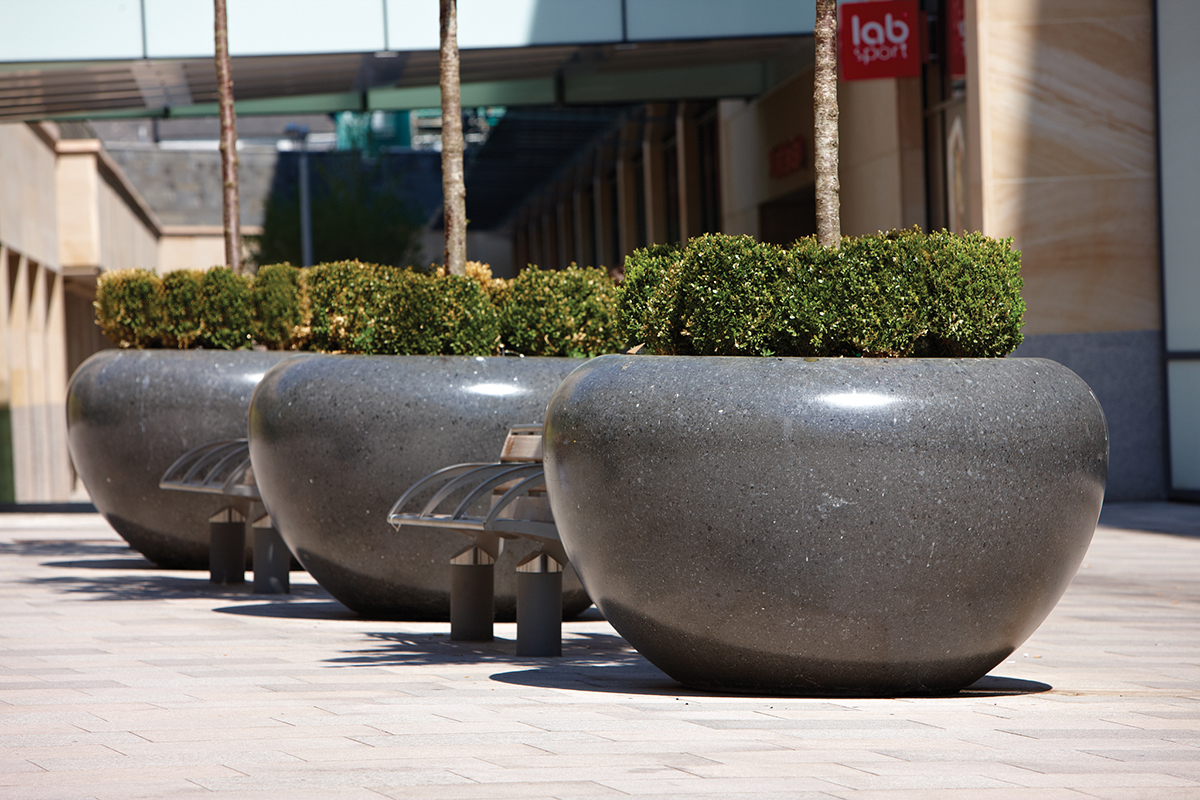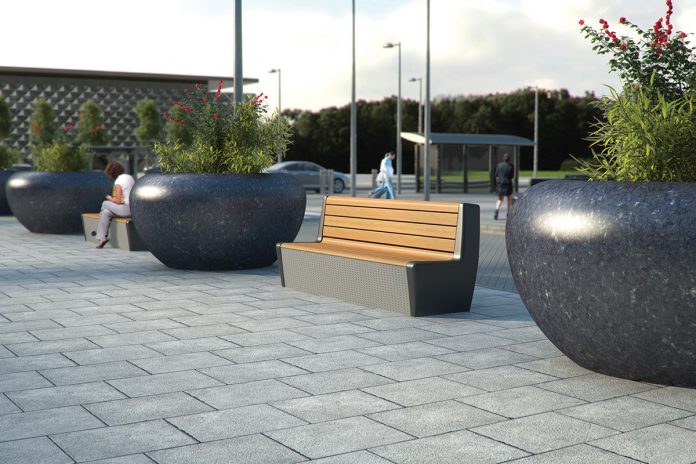Jaz Vilkhu, Managing Director for Marshalls Landscape Protection argues that aesthetics must sit at the heart of landscape security design
Securing public spaces and infrastructure against terrorist attacks has become a key priority for architects over the last couple of years in planning and designing buildings and public spaces. Jaz Vilkhu, Managing Director for Marshalls Landscape Protection, argues that the profession should give greater consideration to the aesthetic design of security measures, as opposed to the concrete blocks and barriers that have been installed in urban areas across the UK and Europe.
Protecting against vehicle attacks, or Hostile Vehicle Mitigation (HVM), has become a key concern for architects and according to last year’s Terrorism and Trends Report, the number of concrete and steel barriers installed around landmarks, infrastructure, buildings and public spaces has risen sharply as a result. There are numerous examples across the UK, with installations in place at Windsor Castle and to protect parts of Manchester, Edinburgh and Westminster city centres. But the problem with this type of fortification is that while it shows that authorities are taking the terrorist threat seriously, it serves as a constant reminder of the risk that exists.
The issue is that this type of measure could, for example, deter the general public from shopping on the high street, attending a music event or visiting a city centre. It’s a human psychology issue, which constitutes a vicious cycle where the greater perception of risk results in an individual feeling more threatened. This is no temporary reaction – it’s hard-wired to the human brain – when we’re anxious our attention is drawn towards something threatening and away from everyday life.
A balanced approach
Reducing the threat of a vehicle attack is the clear priority, but this doesn’t have to come at the expense of how individuals feel about using a particular space. What is needed is a multi-layered, balanced approach that will enhance a landscape while providing the adequate level of security required.
In the UK, there has been significant progress on this front and we’re starting to see more architects consider this methodology. In a recent study of 698 landscape architects, designers and land security professionals, facilities managers and specifiers which Marshalls published in partnership with IFSEC Global, 79% said they had seen the number of projects requiring an aesthetically pleasing protective landscape protection increase over the last three years. Almost all were confident that this trend will continue moving forward.

The security products used as part of this innovative approach integrate protective, crash-tested technology into carefully designed landscape furniture, such as planters, seating, bollards, litter bins, cycle stands and lighting columns. They act as a far subtler line of protection than steel barricades or concrete blocks and are built to PAS 68/IWA 14.1 certifications – the latest Publicly Available Specification (PAS) for barriers and bollards to assist in terrorism prevention. This sets a standard for the products and their foundations when subjected to impact and can be tailored depending on the risk architects are looking to protect against. For example, a correctly specified, single piece of furniture can stop a 7.5-tonne articulated lorry travelling at 50mph.
In addition to the PAS 68 BSI test standard, the Centre for the Protection of National Infrastructure (CPNI) expects that all security designed to protect against vehicle attacks comply with the International Workshop Agreement (IWA) rating. This ensures that each model is standardised, no matter where they are built and installed in the world, to keep the specification process as simple as possible.
These products are used most effectively as the final line of defence, but the planning and designing of security products into a new or existing space should not come last on the list of priorities. It should be considered at the outset of a project with the goal of reducing risk. This can be done by integrating restricted width lanes, chicanes and water features into the road infrastructure to reduce vehicle speed and at-risk areas with high footfall.
Delivering an aesthetic HVM project
This approach was adopted for a new 5,000-capacity sports facility in Ravenscraig near Glasgow, which was developed to be used as a venue for the 2014 Commonwealth Games and training base during the London 2012 Olympics.
Its planned use for future sporting events, such as the Olympic affiliated ‘International Children’s Games’ in 2021, meant that security was a key issue when it came to designing the facility. As part of the risk assessment, the planners and architects decided that given the potential for large crowds outside the venue and local road infrastructure, measures were required that could withstand an impact of a 2.5-tonne vehicle travelling at 40mph. The architects specified 28 bollards for installation around the front of the site, protecting major pedestrian access points. Lifting bollards were also placed on the road network around the centre to restrict vehicle access on a temporary basis when an event is on.
The rising threat from hostile vehicle attacks means we can expect architects to place greater priority on security when it comes to designing and specifying new urban spaces, particularly those with high footfall. Rather than erecting concrete barriers or steel barricades to protect the public, this approach will play a key role in ensuring people are safe but not scared, providing the protection that the public need, while making sure security measures don’t impact on the appearance and feel of a landscape.
Please note: this is a commercial profile
Lara Valdur Eha
Product Manager
Marshalls Landscape Protection
Marshalls PLC
Tel: +44 (0)1422 312 121











